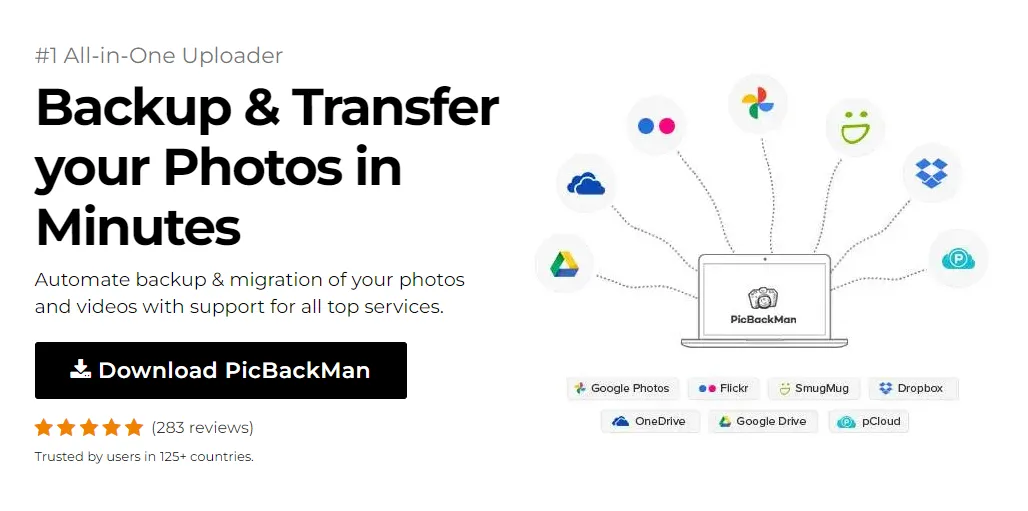
Why is it the #1 bulk uploader?
- Insanely fast!
- Maintains folder structure.
- 100% automated upload.
- Supports RAW files.
- Privacy default.
How can you get started?
Download PicBackMan and start free, then upgrade to annual or lifetime plan as per your needs. Join 100,000+ users who trust PicBackMan for keeping their precious memories safe in multiple online accounts.
“Your pictures are scattered. PicBackMan helps you bring order to your digital memories.”
How to Add OneDrive to File Explorer: Streamline Your Cloud Storage Integration


In today's digital age, cloud storage has become an indispensable tool for individuals and businesses alike. OneDrive, Microsoft's cloud storage service, offers a seamless solution for storing, accessing, and sharing files across devices. Integrating OneDrive with File Explorer on your Windows system can significantly enhance your productivity and streamline your file management workflow. In this comprehensive guide, we'll delve into the step-by-step process of adding OneDrive to File Explorer, empowering you to leverage the full potential of cloud storage with ease.
How to Add OneDrive to File Explorer
Integrating OneDrive with File Explorer is a straightforward process that enables you to access your OneDrive files directly from the familiar interface of File Explorer. Follow these simple steps to seamlessly incorporate OneDrive into your file management system:
-
Sign in to OneDrive: Launch the OneDrive application on your Windows device and sign in with your Microsoft account credentials. If you don't have a Microsoft account, you can create one for free.
-
Sync OneDrive: Once you're signed in, choose the folders and files you want to sync with your device. This allows you to access your OneDrive content offline and ensures that your files are always up to date.
-
Access File Explorer Options: Open File Explorer and navigate to the "View" tab on the toolbar. Click on the "Options" button to access File Explorer's settings.
-
Enable OneDrive Integration: In the Folder Options window, navigate to the "View" tab. Scroll down until you find the option labeled "Show sync provider notifications." Check the box next to this option and click "OK" to save your changes.
-
View OneDrive in File Explorer: Once you've enabled sync provider notifications, you'll see the OneDrive icon in the navigation pane of File Explorer. Clicking on this icon will give you instant access to your OneDrive files and folders, seamlessly integrated into the File Explorer interface.
-
Customize Your OneDrive Settings: Explore additional settings and customization options within the OneDrive application to tailor the integration to your specific preferences. You can adjust sync settings, manage shared files, and configure security options to optimize your OneDrive experience.
By following these steps, you can effortlessly add OneDrive to File Explorer, unlocking a wealth of benefits in terms of file accessibility, collaboration, and synchronization.
Benefits of Integrating OneDrive with File Explorer
Integrating OneDrive with File Explorer offers a myriad of benefits that enhance your file management experience and boost productivity. Here are some key advantages:
-
Seamless Access: With OneDrive integrated into File Explorer, you can access your cloud-stored files directly from the familiar interface of Windows File Explorer, eliminating the need to switch between multiple applications.
-
Offline Accessibility: Syncing OneDrive folders to your device allows you to access your files even when you're offline. This ensures that you can work efficiently, regardless of your internet connection status.
-
Automatic Synchronization: OneDrive's seamless synchronization ensures that your files are always up to date across all your devices. Any changes you make to files or folders in File Explorer are automatically reflected in your OneDrive account and vice versa.
-
Enhanced Collaboration: OneDrive facilitates effortless file sharing and collaboration with colleagues, clients, or friends. With integrated sharing options, you can securely collaborate on documents in real-time, streamlining workflows and fostering teamwork.
-
Backup and Recovery: By storing your files on OneDrive, you benefit from built-in backup and recovery features, safeguarding your data against loss or damage. OneDrive's version history allows you to restore previous versions of files, providing added peace of mind.
-
Cross-Platform Compatibility: OneDrive is compatible with various devices and operating systems, including Windows, macOS, iOS, and Android. This cross-platform functionality ensures that you can access your files seamlessly across all your devices, regardless of the platform.
Expert Tips for Optimizing OneDrive Integration
To maximize the benefits of integrating OneDrive with File Explorer, consider implementing the following expert tips:
-
Organize Your Files: Take advantage of OneDrive's folder structure to organize your files in a logical manner. Create folders for different projects, clients, or categories to streamline file management and improve accessibility.
-
Utilize File Versioning: OneDrive's version history feature allows you to track changes made to files over time and restore previous versions if needed. This can be particularly useful when collaborating on documents or recovering from accidental changes.
-
Set Up Offline Access: Prioritize essential files and folders for offline access to ensure uninterrupted productivity, even when internet connectivity is limited or unavailable. This ensures that you can continue working seamlessly, regardless of external factors.
-
Enable Two-Factor Authentication: Enhance the security of your OneDrive account by enabling two-factor authentication. This adds an extra layer of protection to your files and mitigates the risk of unauthorized access.
-
Regularly Review Permissions: Periodically review the sharing permissions of your OneDrive files and folders to ensure that only authorized individuals have access. Revoking access for outdated or unnecessary collaborators helps maintain data security and privacy.
Quick Tip to ensure your videos never go missing
Videos are precious memories and all of us never want to ever lose them to hard disk crashes or missing drives. PicBackMan is the easiest and simplest way to keep your videos safely backed up in one or more online accounts. Simply Download PicBackMan (it's free!), register your account, connect to your online store and tell PicBackMan where your videos are - PicBackMan does the rest, automatically. It bulk uploads all videos and keeps looking for new ones and uploads those too. You don't have to ever touch it.
FAQs
How do I access OneDrive files from File Explorer?
To access your OneDrive files from File Explorer, simply enable OneDrive integration by signing in to your OneDrive account, syncing folders to your device, and enabling sync provider notifications in File Explorer's settings. Once enabled, you'll see the OneDrive icon in the navigation pane of File Explorer, granting you instant access to your cloud-stored files.
Can I access OneDrive files offline?
Yes, you can access OneDrive files offline by syncing them to your device. By selecting folders for offline access, you can view and edit your files in File Explorer even when you're not connected to the internet. Any changes you make will sync automatically once you're back online.
Is OneDrive integration compatible with macOS?
Yes, OneDrive integration is compatible with macOS, allowing Mac users to access their OneDrive files through the Finder interface. By installing the OneDrive app for macOS and configuring sync settings, Mac users can seamlessly integrate OneDrive with their file management system.
How can I share files stored on OneDrive?
To share files stored on OneDrive, simply right-click on the file or folder you want to share in File Explorer and select the "Share" option. You can then choose whether to share the link with specific people or generate a link that can be accessed by anyone with the URL. Additionally, you can set permissions and customize sharing settings to control who can view or edit the shared files.
Is there a limit to the storage capacity of OneDrive?
Yes, OneDrive offers various storage plans with different capacity limits, ranging from free accounts with limited storage to subscription-based plans with higher storage capacities
Conclusion
Integrating OneDrive with File Explorer offers a convenient and efficient solution for managing your files and accessing them across devices seamlessly. By following the step-by-step instructions outlined in this guide and implementing expert tips, you can harness the full potential of cloud storage and streamline your workflow with ease. Whether you're collaborating on projects, accessing files offline, or backing up important documents, OneDrive integration empowers you to work smarter and more efficiently.






